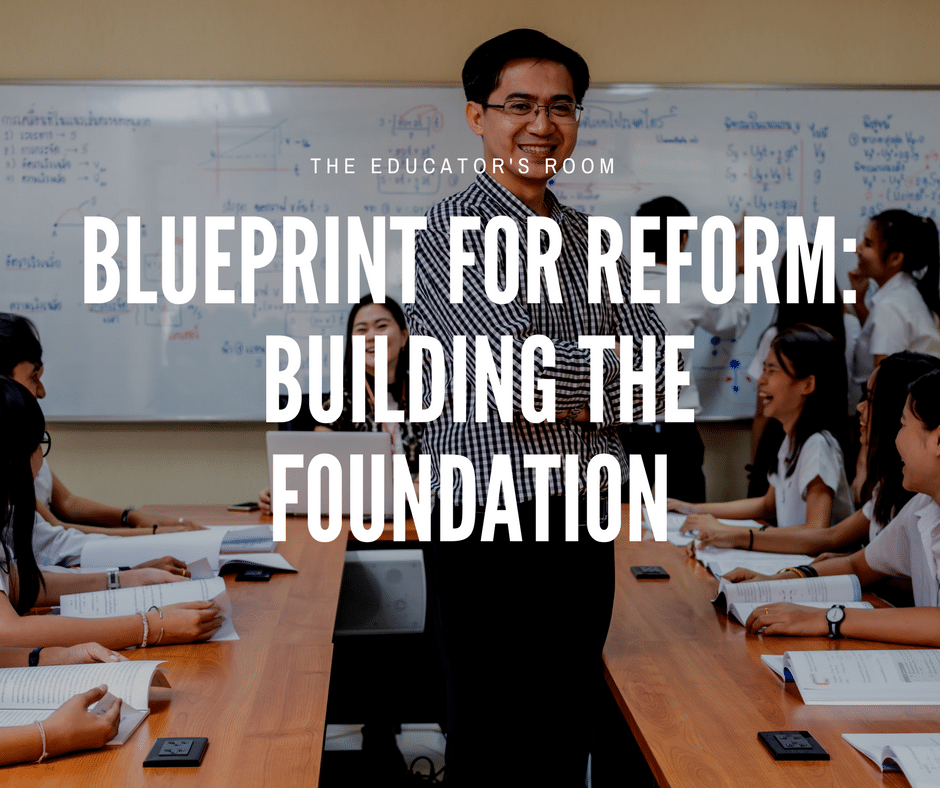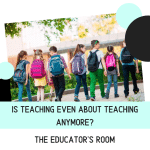Ever since the 2002 reauthorization of ESEA—otherwise known as No Child Left Behind—a day doesn’t pass without talk of education reform. The media tell us our schools are failing students, our teachers are exhausted, and our parents are dissatisfied. As much as we can agree that our nation’s schools are struggling, it is not as easy to agree on why they are struggling or how we can fix the problem. This series of articles is aimed at providing solutions, by focusing on the why and how of education reform.
Anyone can look up NAEP scores or drop-out rates to get an idea of the state of our schools, but any educator will tell you that numbers are not enough. As Sir Ken Robinson acknowledges, our education system is a human system. True reform starts with an understanding of the people—the students, the teachers, the administrators and the community—and the everyday experiences that shape the reality of our schools. As one TER reader suggests, “Our current test and accountability system is not creating the thinkers and innovators our nation needs to progress. We need to change. We need to trust teachers and include them in the conversation about public education.”
This conversation must begin with the foundation of our system. Instead of analyzing numbers to measure progress, it is time to revisit the whole purpose of American education. If we cannot agree on why we are doing things in the first place, it is impossible to agree on what we should be doing. Mission statements have been used since the 1970s in business to identify and organize a common purpose (David, David & David, 2014). The business model does not translate to the dynamic human education system, but this method of prioritization is a worthwhile place to start.
Williams and Hierck (2015) note that a school’s mission should be at the center of everything we do as educators. They caution that the goal of a mission statement is not getting caught up in the creation of the actual statement, but the work that goes into creating the school the statement describes. What if we apply this thinking to our national school system? If we revisit the reason our education system exists before we prescribe a quick fix, our attention shifts from changing scores to changing the culture of our schools.
[bctt tweet=”If we revisit the reason our education system exists before we prescribe a quick fix, our attention shifts from changing scores to changing the culture of our schools. ” via=”no”]
The Conversation Begins
That’s exactly what The Educators Room did. In an anonymous survey of 48 readers, we started the conversation about the mission and purpose of our schools. Educators and adult members of the general public were invited to write a mission statement for the American education system. Though commonalities can be found within the statements, no two statements were exactly alike. This illustrates the dynamic nature of education reform. Systematic, long-lasting change will not come from a one-size-fits-all approach. The needs of our students differ from system to system and school to school. Identifying a clear mission for our schools provides the opportunity to unify our efforts, define our purpose and guide attention to the individual needs of states, districts and schools (David, David and David, 2014; Williams, 2015).
[bctt tweet=”Systematic, long-lasting change will not come from a one-size-fits-all approach. The needs of our students differ from system to system and school to school.” username=””]
Unifying Our Purpose
Of the mission statements written by our readers, a focus on the future beyond K-12 schooling was a common theme. Of the 48 responses, 44% mentioned productive citizenship, contribution to society or active engagement in democracy. Ten percent of the participants referred to life after high school or career and economic success and 6% referenced the need to create lifelong learners. The connection between citizenship and career success was underscored by a reader who wrote: “I don’t believe preparation for future employment and preparation for active engagement in democracy and society are mutually exclusive; the two purposes should be dual purposes of education and this purpose and mission should be vocalized to the public.”
Although successful adulthood was a common theme among mission statements, the conversation about what this looks like has only begun. Seventy-eight percent of participants answered no when asked if students are best served in a system that encourages all to attend college. Contributors suggested an expanded view of success after public school. One wrote: “Students should be encouraged to pursue their strengths and passions whether it be a white-collar or blue-collar trade.” Another added: “An educated public does not all look like college graduates.” Respondents cited the need to broaden the definition of post-secondary success: “…simply taking college prep courses does not necessarily teach students to think critically or deeply understand information (there is a large difference between remembering information and understanding information). College acceptance does not guarantee economic success or advance globalization.”
Beyond Reading, Writing and Arithmetic
Many participants included specific characteristics and skills for future success within their mission statements. While one reader stated that “Literacy is the lifeblood of democracy”, none of the 48 reader-written statements included test scores or specific content knowledge. Twenty-three percent of participants referred to creativity and/ or critical thinking skills. Readers also expressed the need to foster curiosity, free-thinking, problem-solving, media literacy and a love of learning. One reader suggested our mission should be to “…create knowledgeable, skilled, passionate, goal-oriented learners and citizens who consistently demonstrate empathy and integrity.” Another reader suggested we develop“well-rounded children” who are “academically, emotionally and mentally sound.” One respondent described “thoughtful, informed responsible citizens” as our ultimate goal, while another suggested the need to teach students to “speak with compassion and clarity”.
A Solution Under Construction
The Educators Room survey is only a drop in the bucket of the national education reform discussion but reveals the importance of establishing a clear, unified mission for our schools. The internet gives us the power to gather voices from across the nation. Let’s start there. We need an organization with national reach to solicit, compile and unify stakeholders’ ideas of our mission. The U.S. Department of Education, which was created in 1980 and has a 64-billion-dollar budget fits the bill. According their website, the U.S. Department of Education is “dedicated to collecting data on America’s schools and disseminating research and focusing national attention on key educational issues.” We’ve established that creating a stakeholder-focused mission statement is key to defining our purpose and unifying our efforts. Give us a voice. Let us write our mission and start the work of creating the schools we envision.
David, M.E., David, F.R. & David, F.R. (2014). Mission statement theory and practice: A content analysis and new direction. International Journal of Business, Marketing and Decision Sciences, 7(1), 95-110.
Williams, K.C. & Hierck, T. (2014). Starting a Movement: Building Culture from the Inside Out in Professional Learning Communities. Bloomington, Indiana: Solution Tree.
Next Steps
This article is the first in a series about education reform. Throughout the school year, we’ll explore issues such as curriculum, leadership, parent involvement, equity and teacher preparation, and evaluation. We want to hear from you. Be on the lookout for upcoming surveys and other opportunities to take part in the conversation. Please contact the author via email if you are interested in being interviewed or know someone who might: draimeecribbs@gmail.com.
Our readers will determine the direction of the next installment of this series. Please respond to one or both of the following and share:
What abilities and/or skills should students possess when they graduate high school?






